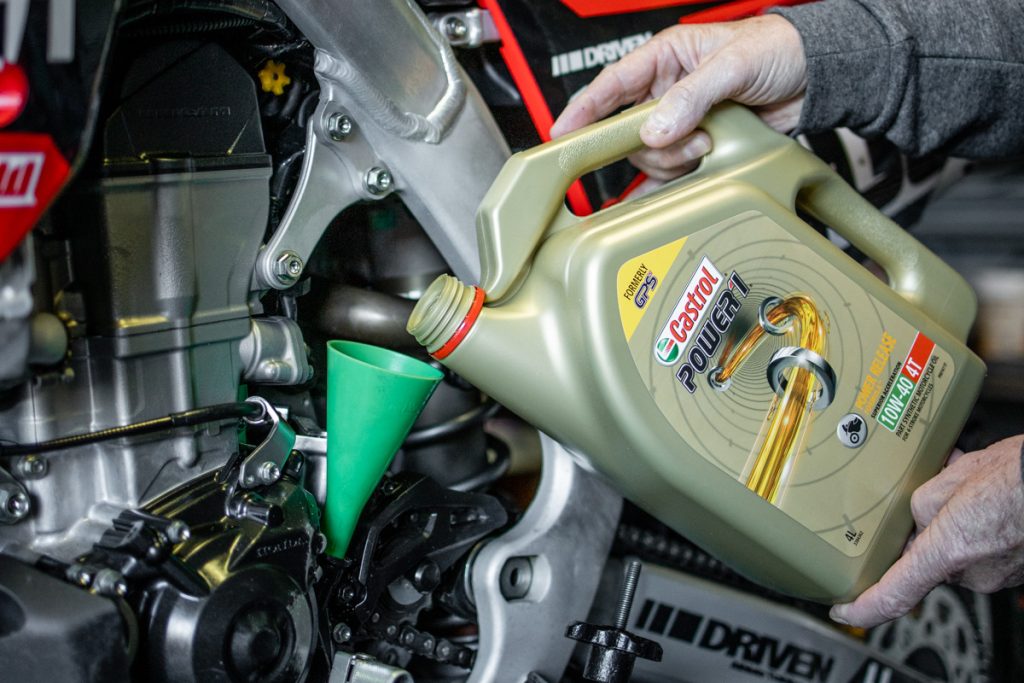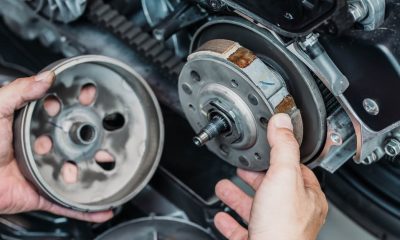Find out how old oil affects performance, how often you need to replace it, and what type of oil best suits your bike

Subscribe to our Instagram Channel for instant news & updates!
Engine oil is the lifeblood of your motorcycle. It flows through the engine, keeping all the moving parts lubricated, cool, and protected from premature wear. Without fresh oil, even the most reliable bike can lose performance or face costly repairs. Despite its importance, many riders are unsure about the best time to change their engine oil. This guide explains everything you need to know, how often to change it, what signs to look out for, and how your riding style influences oil condition, so you can take better care of your bike.
Recommended Oil Change Intervals
Most motorcycle manufacturers recommend changing the engine oil every 3,000 km to 5,000 km. However, this interval can vary based on the type of engine, the age of the motorcycle, and the oil grade used. For example, older carburetor bikes usually require more frequent oil changes, while newer bikes with fuel-injected engines can last slightly longer. Fully synthetic oil also tends to maintain its quality longer compared to mineral oil, allowing slightly extended intervals.
Still, it is always best to follow the suggested guide in your owner’s manual because every engine is designed differently. For riders who do not rack up many kilometres, you should still change your oil at least once a year, even if you haven’t reached the mileage limit. Oil naturally degrades over time, especially when the bike is left unused for long periods.

Why Regular Oil Changes Matter
Engine oil performs several essential functions beyond just lubrication. It carries away heat generated inside the engine, helping to maintain safe operating temperatures. It also traps dirt, metal shavings, and carbon buildup, preventing these particles from circulating and causing damage. When the oil becomes old or dirty, it loses its ability to protect the engine effectively. This can lead to increased friction, overheating, knocking sounds, and reduced engine efficiency.
Skipping oil changes may seem harmless at first, but the long-term impact can be severe. Many major engine failures can be traced back to neglected oil maintenance. A small investment in timely oil changes often saves riders from expensive repairs in the future.

Signs That Your Engine Oil Needs Changing
While mileage is the main indicator, it is also important to pay attention to how your bike feels. There are several signs that suggest your engine oil is no longer performing well.
One early sign is a rougher or louder engine sound. When the oil thins out or becomes contaminated, it cannot cushion the engine components as effectively. Riders may also notice slower acceleration or a slight hesitation when opening the throttle. This happens when the engine struggles to cycle thick or degraded oil.
Another common symptom is increased engine heat. If you feel your bike running hotter than usual, especially during long rides or in traffic, it could mean the oil is no longer cooling the engine efficiently. Dark, thick, or burnt-smelling oil on the dipstick is also a clear indication that it needs to be replaced.

How Riding Conditions Affect Oil Life
Not all riders use their bikes under the same conditions. Your environment and riding habits have a big influence on how quickly your oil breaks down. If you often ride in heavy traffic, the engine experiences constant stop-and-go movement, which heats the oil repeatedly. Short-distance commuters also face the same issue because the engine does not remain at its optimal temperature long enough to burn off moisture and impurities.
On the other hand, riders who frequently go on highway journeys, ride at high RPM, or travel long distances at once may also see their oil degrade faster due to consistently high temperatures. Dusty roads, hot climates, and heavy loads can further shorten oil life. If your riding conditions fall into any of these categories, you should consider changing your oil more frequently than the standard recommendation.

Choosing the Right Engine Oil
Selecting the correct engine oil is equally important in ensuring your bike remains in good health. Motorcycles use three main types of engine oil: mineral, semi-synthetic, and fully synthetic. Mineral oil works well for older bikes or low-stress commuting. Semi-synthetic oil offers a good blend of performance and affordability, making it suitable for most daily riders. Fully synthetic oil provides superior protection, reduced friction, and longer-lasting performance making it perfect for high-performance bikes or riders who want maximum engine care.
You should also pay attention to the oil viscosity rating, such as 10W-40 or 15W-50. This rating indicates how the oil behaves at different temperatures. Using the viscosity recommended by your bike manufacturer ensures optimal engine performance and smooth gear shifting.
Conclusion
Knowing when to change your engine oil is a crucial part of motorcycle maintenance. By following the recommended intervals, recognising the early signs of worn-out oil, and choosing the right oil type, you can keep your motorcycle performing smoothly and reliably. Regular oil changes not only improve your riding experience but also protect your engine from unnecessary strain. With proper care, your bike will remain in excellent condition for many years to come.































Facebook
Instagram
X (Twitter)
YouTube
LinkedIn
RSS